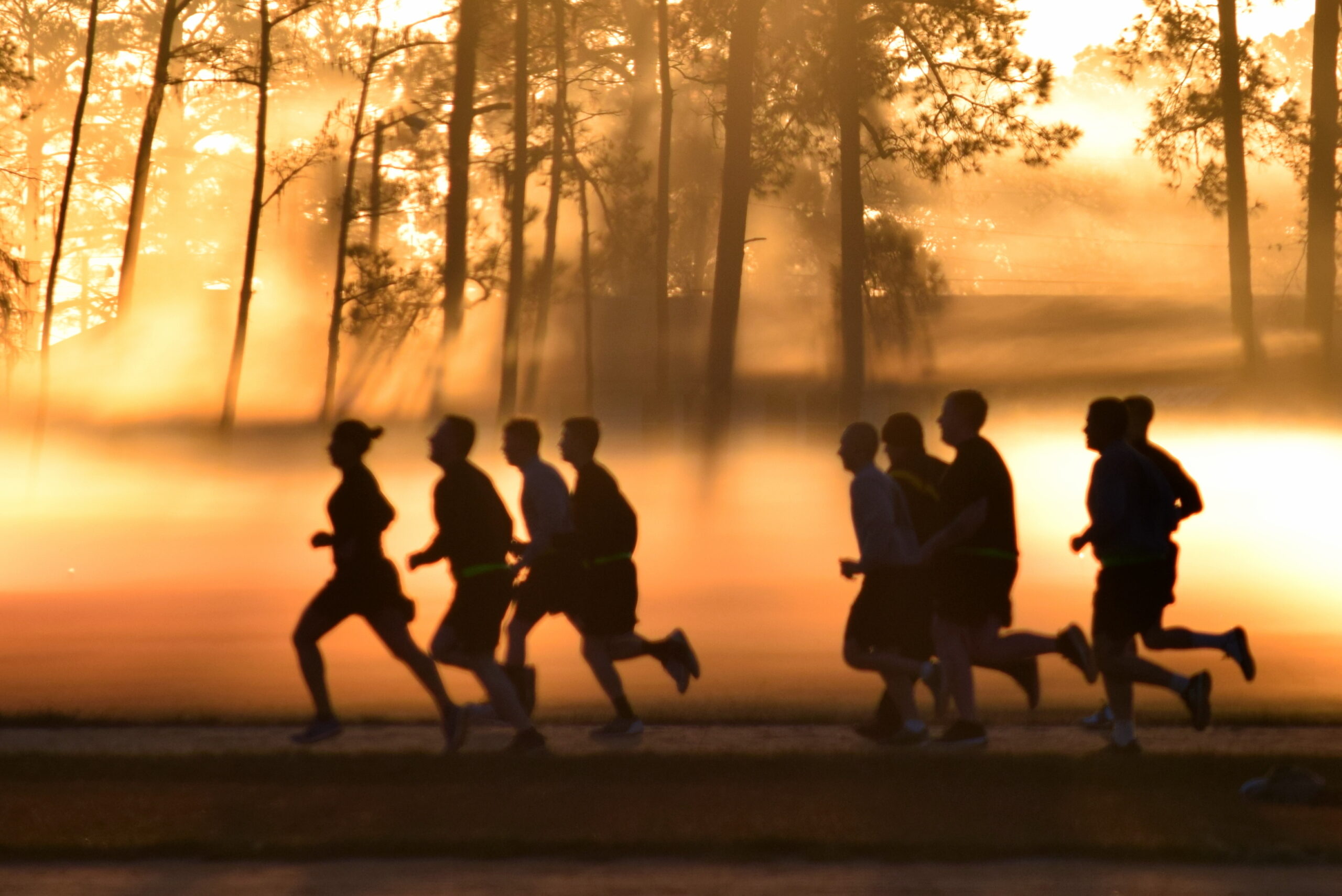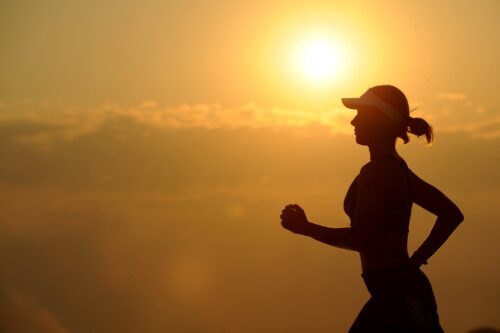U.S. Army photo by Capt. William Carraway
Running is a great way to stay fit and healthy, but it can also put a lot of stress on your feet and legs. That’s why choosing the right running shoes is crucial for preventing injuries and improving your performance. If you are a runner, you know how important it is to choose the right running shoes for your feet, your gait, and your terrain. But how do you know which shoes are best for you? Here are some key features and components that affect the performance, comfort, and durability of your footwear.
1. Upper: This is the part of the shoe that covers and secures your foot. It is usually made of breathable mesh fabric, synthetic leather, or a combination of both. The upper should fit snugly but not too tightly, and allow some flexibility and ventilation. Some uppers have seamless designs to prevent irritation or blisters from stitching. The upper also includes the toe box, which should have enough room for your toes to spread and splay naturally.
2. Midsole: This is the layer between the upper and the outsole that provides cushioning, support, and stability. The midsole is usually made of foam materials such as ethyl vinyl acetate (EVA) or polyurethane (PU), which vary in density, responsiveness, and durability. Some midsoles also have additional elements such as gel pads, air pockets, or carbon plates to enhance shock absorption, energy return, or longitudinal stiffness. The midsole affects how the shoe feels under your foot, and how it adapts to different foot motions and surfaces.
3. Outsole: This is the bottom part of the shoe that contacts the ground. It is usually made of rubber or a blend of rubber and carbon, which offer different levels of traction, durability, and flexibility. The outsole may have different patterns or shapes to suit different terrains or running styles. For example, trail running shoes may have deeper lugs or spikes for better grip on uneven or slippery surfaces, while road running shoes may have smoother or flatter outsoles for more speed and efficiency on hard or flat surfaces.
4. Last: This is the shape or mold of the shoe that determines its overall fit and feel. The last affects how the upper is attached to the midsole, and how the shoe curves from heel to toe. There are three main types of lasts: curved, semi-curved, and straight. Curved lasts are more suitable for runners with high arches or underpronation (supination), as they promote more inward foot motion. Semi-curved lasts are more suitable for runners with normal arches or neutral pronation, as they offer a balance of cushioning and stability. Straight lasts are more suitable for runners with low arches or overpronation, as they provide more support and control for outward foot motion.
Finding the Best Running Shoes for Your Needs
Finding the best running shoes for your individual needs can be challenging, but there are some factors that can help you decide.
1. Running Location: Where do you run most often? On roads, trails, or a mix of both? Road running shoes are designed to cushion and stabilize your feet on hard and even surfaces. Trail running shoes have more traction, stability and protection for uneven and rugged terrain. Cross training shoes are designed to provide versatility and support for different types of workouts.
2. Cushioning Level: How much cushioning do you like under your feet? Some runners like to feel the ground and have more feedback, while others prefer more cushioning and shock absorption. Cushioning can also affect the weight and responsiveness of the shoe. The thickness and firmness of the midsole material are the main factors that determine the cushioning level of a shoe. The best cushioning level for you depends on your preference, running style, injury history, and surface.
You can choose from maximum, moderate, or minimal cushioning depending on what suits you best. Maximum cushioning is often good for runners with high arches, long distances, or hard surfaces. It offers the most plush and comfortable feel, but it may also be heavier and less responsive. Moderate cushioning is a good balance of comfort and performance for most runners with neutral pronation and arches. It provides enough cushioning to protect your feet from impact, but it also allows some ground feel and feedback.Minimal cushioning is favored by runners who want to feel their connection to the ground, have more natural foot movement, or run on softer surfaces. It offers the least amount of cushioning, but it also gives you more flexibility and responsiveness.
3. Gait: How does your foot move when you run? Do you have a neutral gait, or do you overpronate (roll inward) or supinate (roll outward)? Most runners can wear a neutral shoe, but some may benefit from a stability shoe that provides extra support and prevents excessive pronation.
You can check your gait by looking at your old shoes, doing a wet foot test, or visiting a running store for a gait analysis. A wet foot test involves wetting the sole of your foot and stepping on a piece of paper or a concrete slab. You can then look at your footprint to see how much of your arch is visible. A neutral gait usually shows about half of the arch, while an overpronated gait shows most or all of it, and a supinated gait shows little or none of it.
4. Heel-to-Toe Drop: What is the heel-to-to drop of the shoe? Heel-to-toe drop is a measurement of the difference in height between the heel and the forefoot of a running shoe. It is expressed in millimeters and can range from zero to 14 mm. Heel-to-toe drop should not be confused with stack height, which is the amount of cushioning material between the foot and the ground.
Heel-to-toe drop can have an impact on injuries. A high heel-to-toe drop can cause more stress on the heel, ankle, and Achilles tendon since it encourages a heel-strike gait, while a low or zero drop can reduce the impact on these areas but increase the load on the knees and hips. That being said, there is a lack of evidence that a shoe’s drop affects overall injury rates. The best heel-to-toe drop for running depends on the individual’s foot strike, comfort, preexisting injuries, and the terrain.
5. Fit: How does the shoe fit your foot shape and size? The shoe should fit snugly but not tightly, with enough room in the toe box for your toes to spread and flex naturally. The heel should be secure and not slip, and the upper should be smooth and comfortable. You should also consider your arch height, width, and volume preferences.
Purchasing Running Shoes
Try on different sizes and brands before buying. Running shoes may vary in size and shape depending on the manufacturer, so it’s important to try on several options and compare how they feel on your feet. You may need a half or a full size larger than your normal shoes to accommodate for swelling and movement during running.
When trying on shoes, wear the socks you plan to run in. The thickness and material of your socks can affect the fit and comfort of your running shoes, so make sure you wear the same ones you will use for running when you test the shoes. This will help you avoid blisters, chafing, and other problems caused by ill-fitting shoes.
If possible, test the shoes on the surface you plan to run on most often, or at least on a similar one. This will help you assess how the shoes perform in terms of cushioning, stability, and traction.
The best way to test running shoes is to actually run in them for a while. This will help you get a feel for how the shoes fit, support, and respond to your feet during running. You may also notice any potential issues or discomforts that may arise after some time. If the shoes feel good after 10 minutes, they are likely to be a good choice for you.
*The views and opinions expressed on this website are solely those of the original authors and contributors. These views and opinions do not necessarily represent those of Spotter Up Magazine, the administrative staff, and/or any/all contributors to this site.



